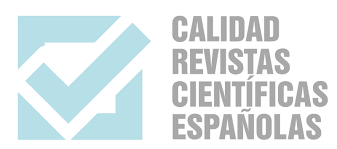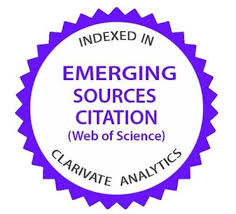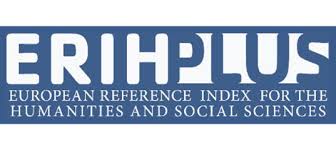Decision-making between biases and strategies
The contribution of cognitive neuroscience
DOI:
https://doi.org/10.35295/osls.iisl.2308Keywords:
Decision-making, Cognitive neuroscience, Cognitive biases, Cognitive strategies, NeuroassessmentAbstract
Decision-making is a fundamental cognitive function that extends beyond controlled laboratory paradigms into complex real-world contexts shaped by uncertainty, social influences, and emotional factors. Traditional models emphasize rational deliberation but often overlook the implicit physiological and neural mechanisms underlying choices. Neuroscientific research shows that decision-making arises from the interplay between executive control, reward sensitivity, affective regulation, and social cognition, supported by distributed neural networks including the prefrontal cortex, limbic system, and social brain regions. This paper highlights the limitations of conventional assessments, which rely mainly on explicit behavioral measures while neglecting physiological effort, autonomic activation, and neurocognitive correlates. Finally, we introduce the Digitalized Assessment Tool for Decision-Making (DAsDec), as example of an integrative approach combining behavioral, psychophysiological, and neurocognitive metrics. By leveraging wearable technologies and realistic tasks, the tool represents a step toward a more comprehensive understanding of decision-making, with implications for applied domains such as healthcare, management, law and policy-making.
Downloads
Metrics
Global Statistics ℹ️
|
159
Views
|
106
Downloads
|
|
265
Total
|
|
References
Angioletti, L., et al., 2024. Can professionals “keep the tiller straight” in organizations? Resistance to reframing and decoy alternatives in workplace decision-making. Frontiers in Psychology [online], 15, 1270012. Available at: https://doi.org/10.3389/fpsyg.2024.1270012 DOI: https://doi.org/10.3389/fpsyg.2024.1270012
Balconi, M., 2023. Why a dynamic multicomponential model of decision making: some milestones and a preliminary tool. Neuropsychological Trends [online], 33, 9–16. Available at: https://doi.org/10.7358/neur-2023-033-balm DOI: https://doi.org/10.7358/neur-2023-033-balm
Balconi, M., Acconito, C., Allegretta, R. A., and Crivelli, D., 2023. What is the relationship between metacognition and mental effort in executive functions? The contribution of neurophysiology. Behavioral Sciences [online], 13(11), 918. Available at: https://doi.org/10.3390/bs13110918 DOI: https://doi.org/10.3390/bs13110918
Balconi, M., Acconito, C., Allegretta, R.A., and Angioletti, L., 2024. Neurophysiological and autonomic correlates of metacognitive control of and resistance to distractors in ecological setting: a pilot study. Sensors [online], 24(7), 2171. Available at: https://doi.org/10.3390/s24072171 DOI: https://doi.org/10.3390/s24072171
Balconi, M., Acconito, C., and Angioletti, L., 2024. Not everyone chooses profit (if it is too tiring): what behavioral and EEG data tell us. Applied Sciences [online], 14(11), 4793. Available at: https://doi.org/10.3390/app14114793 DOI: https://doi.org/10.3390/app14114793
Balconi, M., Acconito, C., Rovelli, K., and Angioletti, L., 2023. Influence of and resistance to nudge decision-making in professionals. Sustainability [online], 15(19), 14509. Available at: https://doi.org/10.3390/su151914509 DOI: https://doi.org/10.3390/su151914509
Balconi, M., Allegretta, R.A., and Angioletti, L., 2025. Metacognition of one’s strategic planning in decision-making: the contribution of EEG correlates and individual differences. Cognitive Neurodynamics [online], 19(1), 4. Available at: https://doi.org/10.1007/s11571-024-10189-8 DOI: https://doi.org/10.1007/s11571-024-10189-8
Balconi, M., Allegretta, R.A., Rovelli, K., and Acconito, C., 2024. Exploring self-relevance in decision-making: first-person, shared, or impersonal professional choice. Advances in Cognitive Psychology [online], 20(4), 376–388. Available at: https://doi.org/10.5709/acp-0440-5 DOI: https://doi.org/10.5709/acp-0440-5
Balconi, M., and Angioletti, L., 2024. The Digitalized Assessment for Decision-Making (DAsDec): a novel integrated neuroscientific and behavioral tool. Neuropsychological Trends [online], 36, 69–79. Available at: https://doi.org/10.7358/neur-2024-036-balc DOI: https://doi.org/10.7358/neur-2024-036-balc
Balconi, M., and Vanutelli, M.E., 2017. Cooperation and competition with hyperscanning methods: review and future application to emotion domain. Frontiers in Computational Neuroscience [online], 11(September), 86. Available at: https://doi.org/10.3389/fncom.2017.00086 DOI: https://doi.org/10.3389/fncom.2017.00086
Balconi, M., Angioletti, L., and Acconito, C., 2023. Self-Awareness of Goals Task (SAGT) and planning skills: the neuroscience of decision making. Brain Sciences [online], 13(8), 1163. Available at: https://doi.org/10.3390/brainsci13081163 DOI: https://doi.org/10.3390/brainsci13081163
Balconi, M., Angioletti, L., and Allegretta, R.A., 2025. Which type of feedback—Positive or negative- reinforces decision recall? An EEG study. Frontiers in Systems Neuroscience [online], 18, 1524475. Available at: https://doi.org/10.3389/fnsys.2024.1524475 DOI: https://doi.org/10.3389/fnsys.2024.1524475
Berridge, K.C., and Kringelbach, M.L., 2011. Building a neuroscience of pleasure and well-being. Psychology of Well-Being [online], 1(1), 3. Available at: https://doi.org/10.1186/2211-1522-1-3 DOI: https://doi.org/10.1186/2211-1522-1-3
Canessa, N., et al., 2013. The functional and structural neural basis of individual differences in loss aversion. The Journal of Neuroscience [online], 33(36), 14307–14317. Available at: https://doi.org/10.1523/JNEUROSCI.0497-13.2013 DOI: https://doi.org/10.1523/JNEUROSCI.0497-13.2013
Ceschi, A., et al., 2019. Dimensions of decision-making: an evidence-based classification of heuristics and biases. Personality and Individual Differences [online], 146, 188–200. Available at: https://doi.org/10.1016/j.paid.2018.07.033 DOI: https://doi.org/10.1016/j.paid.2018.07.033
Churchland, P.S., 1987. Epistemology in the age of neuroscience. Journal of Philosophy [online], 84(10), 544–553. Available at: https://doi.org/10.5840/jphil1987841026 DOI: https://doi.org/10.5840/jphil1987841026
Crivelli, D., Acconito, C., and Balconi, M., 2024a. Emotional and Cognitive “Route” in Decision-Making Process: The Relationship between Executive Functions, Psychophysiological Correlates, Decisional Styles, and Personality. Brain Sciences [online], 14(7), 734. Available at: https://doi.org/10.3390/brainsci14070734 DOI: https://doi.org/10.3390/brainsci14070734
Crivelli, D., Acconito, C., and Balconi, M., 2024b. What happens to information, situational cues, and individual strategies in decision-making? The contribution of latent decisional profiles in realistic decisions. Decision [online], 51(1), 57–68. Available at: https://doi.org/10.1007/s40622-024-00374-3 DOI: https://doi.org/10.1007/s40622-024-00374-3
Crivelli, D., Allegretta, R.A., and Balconi, M., 2024. Physiology of risk-taking and risk management in realistic decision-making scenarios. Psychological Reports [online], Advance Online Publication, 4 June. Available at: https://doi.org/10.1177/00332941241258919 DOI: https://doi.org/10.1177/00332941241258919
Crivelli, D., and Balconi, M., 2017. Near-infrared spectroscopy applied to complex systems and human hyperscanning networking. Applied Sciences [online], 7(9), 922. Available at: https://doi.org/10.3390/app7090922 DOI: https://doi.org/10.3390/app7090922
Crivelli, D., and Balconi, M., 2023. Shared emotions, interpersonal syntonization, and group decision-making: a multi-agent perspective. Frontiers in Neuroscience [online], vol. 17, 1251855. Available at: https://doi.org/10.3389/fnins.2023.1251855 DOI: https://doi.org/10.3389/fnins.2023.1251855
Crivelli, D., et al., 2023. The “status quo bias” in response to external feedback in decision-makers. Adaptive Human Behavior and Physiology [online], 9(4), 426–441. Available at: https://doi.org/10.1007/s40750-023-00230-1 DOI: https://doi.org/10.1007/s40750-023-00230-1
Czeszumski, A., et al., 2020. Hyperscanning: a valid method to study neural inter-brain underpinnings of social interaction. Frontiers in Human Neuroscience [online], vol. 14, p. 39. Available at: https://doi.org/10.3389/fnhum.2020.00039 DOI: https://doi.org/10.3389/fnhum.2020.00039
Damasio, A.R., 1994. Descartes’ Error: Emotion, Reason, and the Human Brain. New York: Putnam.
Dolan, R.J., and Dayan, P., 2013. Goals and habits in the brain. Neuron [online], 80(2), 312–325. Available at: https://doi.org/10.1016/j.neuron.2013.09.007 DOI: https://doi.org/10.1016/j.neuron.2013.09.007
Doya, K., 2008. Modulators of decision making. Nature Neuroscience [online], 11(4), 410–416. Available at: https://doi.org/10.1038/nn2077 DOI: https://doi.org/10.1038/nn2077
Fleming, S.M., and Daw, N.D., 2017. Self-evaluation of decision-making: a general Bayesian framework for metacognitive computation. Psychological Review [online], 124(1), 91–114. Available at: https://doi.org/10.1037/rev0000045 DOI: https://doi.org/10.1037/rev0000045
Fleming, S.M., and Dolan, R.J., 2012. The neural basis of metacognitive ability. Philosophical Transactions of the Royal Society B: Biological Sciences [online], 367(1594), 1338–1349. Available at: https://doi.org/10.1098/rstb.2011.0417 DOI: https://doi.org/10.1098/rstb.2011.0417
Friedman, N.P., and Robbins, T.W., 2022. The role of prefrontal cortex in cognitive control and executive function. Neuropsychopharmacology [online], 47(1), 72–89. Available at: https://doi.org/10.1038/s41386-021-01132-0 DOI: https://doi.org/10.1038/s41386-021-01132-0
Frith, C.D., and Singer, T., 2008. The role of social cognition in decision making. Philosophical Transactions of the Royal Society B: Biological Sciences [online], 363(1511), 3875–3886. Available at: https://doi.org/10.1098/rstb.2008.0156 DOI: https://doi.org/10.1098/rstb.2008.0156
Funahashi, S., 2017. Prefrontal contribution to decision-making under free-choice conditions. Frontiers in Neuroscience [online], 11, 431. Available at: https://doi.org/10.3389/fnins.2017.00431 DOI: https://doi.org/10.3389/fnins.2017.00431
Gigerenzer, G., 2007. Gut feelings: The intelligence of the unconscious. New York: Viking Press.
Hall, P.J., et al., 2011. An economic perspective on the Reinforcement Sensitivity Theory of personality. Personality and Individual Differences [online], 51(3), 242–247. Available at: https://doi.org/10.1016/j.paid.2010.06.023 DOI: https://doi.org/10.1016/j.paid.2010.06.023
Holroyd, C.B., and Coles, M.G.H., 2002. The neural basis of human error processing: reinforcement learning, dopamine, and the error-related negativity. Psychological Review [online], 109(4), 679–709. Available at: https://psycnet.apa.org/doi/10.1037/0033-295X.109.4.679 DOI: https://doi.org/10.1037//0033-295X.109.4.679
Hou, Y., et al., 2022. Group polarization calls for group-level brain communication. NeuroImage [online], 264, 119739. Available at: https://doi.org/10.1016/j.neuroimage.2022.119739 DOI: https://doi.org/10.1016/j.neuroimage.2022.119739
Kahneman, D., 2011. Thinking, fast and slow. New York: Farrar, Straus and Giroux.
Kahneman, D., and Tversky, A., 1973. On the psychology of prediction. Psychological Review [online], 80(4), 237–251. Available at: https://doi.org/10.1037/h0034747 DOI: https://doi.org/10.1037/h0034747
Kappes, A., et al., 2020. Confirmation bias in the utilization of others’ opinion strength. Nature Neuroscience [online], 23(1), 130–137. Available at: https://doi.org/10.1038/s41593-019-0549-2 DOI: https://doi.org/10.1038/s41593-019-0549-2
Klein, G., 2008. Naturalistic decision making. Human Factors [online], 50(3), 456–460. Available at: https://doi.org/10.1518/001872008X288385 DOI: https://doi.org/10.1518/001872008X288385
Korteling, J.E., Brouwer, A.M., and Toet, A., 2018. A neural network framework for cognitive bias. Frontiers in Psychology [online], 9, 1561. Available at: https://doi.org/10.3389/fpsyg.2018.01561 DOI: https://doi.org/10.3389/fpsyg.2018.01561
Kosslyn, S.M., and Koenig, O., 1992. Wet mind: the new cognitive neuroscience. New York: The Free Press.
Maier, N.R.F., 1970. Problem solving and creativity: in individuals and groups. Belmont: Brooks/Cole.
O’Doherty, J.P., et al., 2021. Why and how the brain weights contributions from a mixture of experts. Neuroscience and Biobehavioral Reviews [online], 123, 14–23. Available at: https://doi.org/10.1016/j.neubiorev.2020.10.022 DOI: https://doi.org/10.1016/j.neubiorev.2020.10.022
Pessiglione, M., and Delgado, M.R., 2015. The good, the bad and the brain: neural correlates of appetitive and aversive values underlying decision making. Current Opinion in Behavioral Sciences [online], 5, 78–84. Available at: https://doi.org/10.1016/j.cobeha.2015.08.006 DOI: https://doi.org/10.1016/j.cobeha.2015.08.006
Phillips-Wren, G., and Adya, M., 2020. Decision making under stress: the role of information overload, time pressure, complexity, and uncertainty. Journal of Decision Systems [online], 29(sup1), 213–225. Available at: https://doi.org/10.1080/12460125.2020.1768680 DOI: https://doi.org/10.1080/12460125.2020.1768680
Rovelli, K., and Balconi, M., 2025. Mind in others’ shoes: neuroscientific protocol for external referent decision awareness (ERDA) in organizations. Neuroscience [online], 567, 249–260. Available at: https://doi.org/10.1016/j.neuroscience.2025.01.014 DOI: https://doi.org/10.1016/j.neuroscience.2025.01.014
Rovelli, K., et al., 2024. Neurosciences tell us how to be adaptable, creative, and proactive agents in decision making: a pilot study. Journal of Neuroscience, Psychology, and Economics [online], 17(1), 30–45. Available at: https://doi.org/10.1037/npe0000184 DOI: https://doi.org/10.1037/npe0000184
Sharot, T., 2011. The optimism bias: A tour of the irrationally positive brain. New York: Pantheon/Random House.
Simon, H.A., 1955. A behavioral model of rational choice. The Quarterly Journal of Economics [online], 69(1), 99–118. Available at: https://doi.org/10.2307/1884852 DOI: https://doi.org/10.2307/1884852
Starcke, K., and Brand, M., 2012. Decision making under stress: a selective review. Neuroscience and Biobehavioral Reviews [online], 36(4), 1228–1248. Available at: https://doi.org/10.1016/j.neubiorev.2012.02.003 DOI: https://doi.org/10.1016/j.neubiorev.2012.02.003
Tversky, A., and Kahneman, D., 1974. Judgment under uncertainty: heuristics and biases. Biases in judgments reveal some heuristics of thinking under uncertainty. Science [online], 185(4157), 1124–1131. Available at: https://doi.org/10.1126/science.185.4157.1124 DOI: https://doi.org/10.1126/science.185.4157.1124
Tyrka, A.R., et al., 2007. Temperament and response to the Trier Social Stress Test. Acta Psychiatrica Scandinavica [online], 115(5), 395–402. Available at: https://doi.org/10.1111/j.1600-0447.2006.00941.x DOI: https://doi.org/10.1111/j.1600-0447.2006.00941.x
von Neumann, J., and Morgenstern, O., 1947. Theory of Games and Economic Behavior [online]. Princeton University Press. Available at: https://doi.org/10.1515/9781400829460 DOI: https://doi.org/10.1515/9781400829460
Wise, T., Emery, K., and Radulescu, A., 2024. Naturalistic reinforcement learning. Trends in Cognitive Sciences [online], 28(2), 144–158. Available at: https://doi.org/10.1016/j.tics.2023.08.016 DOI: https://doi.org/10.1016/j.tics.2023.08.016
Zelazo, P.D., et al., 2003. The development of executive function. Monographs of the Society for Research in Child Development [online], 68(3), 1–27. Available at: https://pubmed.ncbi.nlm.nih.gov/14723273/ DOI: https://doi.org/10.1111/j.0037-976X.2003.00261.x
Zhao, H., et al., 2023. Distinct inter-brain synchronization patterns underlying group decision-making under uncertainty with partners in different interpersonal relationships. NeuroImage [online], 272, 120043. Available at: https://doi.org/10.1016/j.neuroimage.2023.120043 DOI: https://doi.org/10.1016/j.neuroimage.2023.120043
Downloads
Published
How to Cite
Issue
Section
License
Copyright (c) 2025 Prof. Michela Balconi, Dr. Davide Crivelli

This work is licensed under a Creative Commons Attribution-NonCommercial-NoDerivatives 4.0 International License.
OSLS strictly respects intellectual property rights and it is our policy that the author retains copyright, and articles are made available under a Creative Commons licence. The Creative Commons Non-Commercial Attribution No-Derivatives licence is our default licence and it regulates how others can use your work. Further details available at https://creativecommons.org/licenses/by-nc-nd/4.0 If this is not acceptable to you, please contact us.
The non-exclusive permission you grant to us includes the rights to disseminate the bibliographic details of the article, including the abstract supplied by you, and to authorise others, including bibliographic databases, indexing and contents alerting services, to copy and communicate these details.
For information on how to share and store your own article at each stage of production from submission to final publication, please read our Self-Archiving and Sharing policy.
The Copyright Notice showing the author and co-authors, and the Creative Commons license will be displayed on the article, and you must agree to this as part of the submission process. Please ensure that all co-authors are properly attributed and that they understand and accept these terms.






















